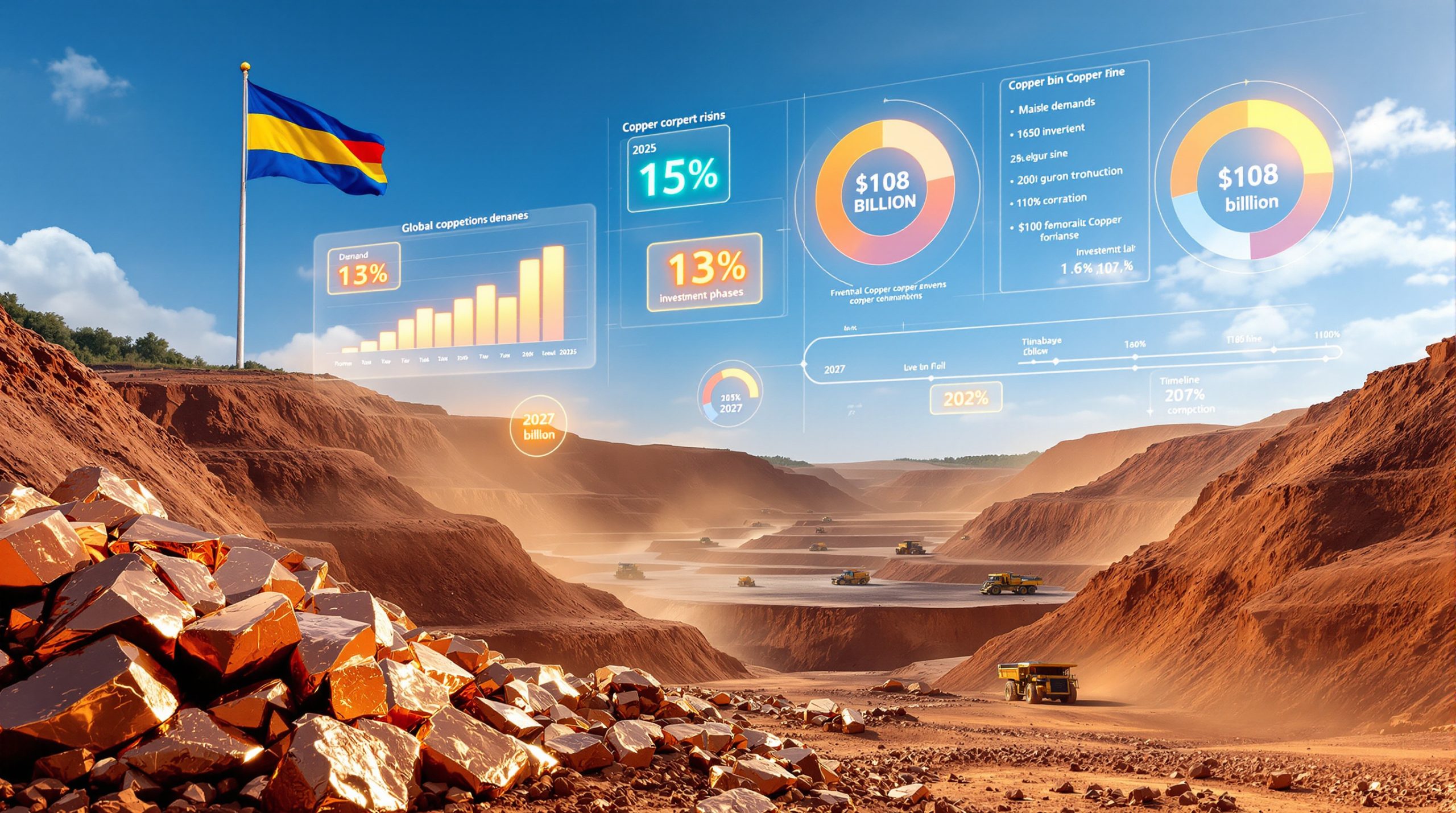Understanding QatarEnergy's November 2025 Sulphur Price Surge
QatarEnergy Marketing's decision to increase its November Qatar Sulphur Price (QSP) to $400/t fob represents a dramatic $76/t jump from October's $324/t level. This substantial price adjustment reflects the state-owned company's response to tightening global sulphur supply conditions and sustained demand from fertiliser manufacturers worldwide.
The November pricing establishes delivered costs to Chinese markets at approximately $420-425/t cfr when factoring current freight rates of $20-25/t for standard shipment sizes. This pricing structure demonstrates how regional logistics costs compound the impact of producer price increases on end-user markets.
The QatarEnergy sulphur price increase marks a critical inflection point for global commodity markets, as this pricing decision ripples throughout Asia-Pacific fertiliser supply chains. The magnitude of this adjustment signals fundamental shifts in supply-demand dynamics that extend far beyond Qatar's borders.
What Drives Qatar's Dominant Position in Global Sulphur Markets?
Production Infrastructure and Strategic Location
Qatar's sulphur production stems primarily from its massive natural gas processing operations at Ras Laffan and Mesaieed facilities. The country's position as a leading LNG exporter creates substantial sulphur byproducts through gas sweetening processes, positioning QatarEnergy as a price-setting force in regional markets.
The strategic location provides cost-effective access to key Asian fertiliser markets, particularly China and India, where substantial sulphur consumption occurs in fertiliser manufacturing applications. This geographical advantage allows Qatar to maintain competitive delivered pricing despite higher fob levels.
Qatar's integrated infrastructure combines world-class port facilities with dedicated sulphur handling equipment, enabling efficient bulk shipments that support the country's market-making capabilities. The seamless connection between production facilities and export terminals creates operational advantages that competitors struggle to replicate.
Market Share and Pricing Influence
QatarEnergy's pricing decisions ripple throughout Asia-Pacific sulphur markets due to the company's substantial market presence and reputation for reliable supply. The Qatar Sulphur Price serves as a benchmark for regional transactions, influencing pricing negotiations across multiple supplier-buyer relationships.
The company's consistent monthly price announcements provide market transparency that buyers and sellers use for contract negotiations. This pricing transparency, combined with Qatar's reliable supply track record, reinforces the QSP's role as a regional benchmark despite price volatility.
Market participants closely monitor QatarEnergy's monthly pricing announcements as indicators of broader market sentiment. The company's willingness to make substantial price adjustments, as demonstrated by the $76/t November increase, signals confidence in underlying market fundamentals.
How Has Sulphur Pricing Evolved Throughout 2025?
| Month | QSP Price ($/t fob) | Monthly Change | YTD Change |
|---|---|---|---|
| January 2025 | $166 | – | – |
| October 2025 | $324 | +$40 | +$158 |
| November 2025 | $400 | +$76 | +$234 |
The data reveals a remarkable 141% price increase from January to November 2025, with the November QSP reaching its highest level since the $428-490/t range observed during April-July 2022. This pricing trajectory reflects fundamental supply-demand imbalances that have persisted throughout the year.
Critical Market Insight: The current $400/t level approaches the peak pricing witnessed during the 2022 commodity supercycle, when sulphur prices subsequently crashed to $77/t by August 2022, demonstrating the commodity's inherent volatility potential.
The sustained price appreciation throughout 2025 contrasts sharply with historical patterns where sulphur markets typically experience rapid corrections following extended rallies. This persistence suggests structural market changes rather than temporary supply disruptions.
Monthly price increases have accelerated during the second half of 2025, with the November $76/t jump representing the largest single-month adjustment in recent memory. This acceleration pattern often precedes either market peaks or further significant price advances. Furthermore, the velocity of this commodity volatility insights demonstrates how global supply chains must adapt rapidly to changing market conditions.
What Market Forces Are Driving These Price Increases?
Supply-Side Constraints
Global sulphur production has struggled to match accelerating demand growth, particularly from fertiliser manufacturers expanding operations to meet agricultural needs. Refinery maintenance schedules and natural gas processing disruptions have created periodic supply gaps that support higher pricing levels.
Environmental regulations requiring sulphur removal from petroleum products continue expanding globally, but the recovered sulphur often enters markets with timing mismatches relative to fertiliser production cycles. This temporal disconnect between sulphur recovery and fertiliser demand creates structural supply challenges.
Key production facilities across multiple regions have experienced unplanned maintenance events during 2025, reducing available supply precisely when demand remains robust. These operational disruptions compound planned maintenance schedules to create tighter-than-expected market conditions. Additionally, the us drilling decline has impacted sulphur recovery from petroleum operations across North American markets.
Natural gas processing facilities, which generate substantial sulphur byproducts, face operational constraints related to environmental compliance and equipment reliability. These constraints limit the industry's ability to rapidly increase sulphur production in response to higher prices. In contrast, oil & gas drilling in alaska continues expanding, potentially creating future sulphur supply additions.
Demand Fundamentals
Fertiliser manufacturers represent the primary demand driver, consuming substantial portions of global sulphur production for sulphuric acid manufacturing. Rising agricultural commodity prices have supported fertiliser demand, creating sustained purchasing pressure on sulphur markets throughout 2025.
Industrial applications beyond fertilisers, including chemical processing and metal extraction, provide additional demand support that limits price volatility during agricultural off-seasons. This industrial base demand creates a price floor that supports sulphur values even during weaker agricultural periods.
The Indian government's recent fertilizer subsidy increases, announced on October 28, 2025, demonstrate policy support for maintaining fertiliser affordability despite higher raw material costs. The cabinet approved higher subsidies for phosphorus and sulphur-containing fertilisers, with DAP subsidies rising 7% to Rs29,805/t and special additional support of Rs3,500/t.
Asian fertiliser demand patterns show seasonal strength during the fourth quarter as manufacturers prepare for spring planting seasons. This seasonal demand overlay on already tight supply conditions amplifies price pressures during the final months of 2025. However, ongoing trade war & oil markets tensions continue influencing global commodity flows and pricing structures.
How Do Freight Costs Impact Regional Sulphur Pricing?
Current shipping rates from Qatar to major Asian destinations significantly influence delivered pricing structures across the region:
- South China ports: $20-22/t for 30,000-35,000t shipments
- Chinese river ports: $23-25/t for similar cargo sizes
- Total delivered cost to China: $420-425/t cfr
- Freight percentage of delivered cost: Approximately 5-6%
These freight premiums represent a manageable portion of total delivered costs, making transportation efficiency crucial for maintaining competitive positioning in price-sensitive markets. The relatively stable freight rates provide predictability for buyers planning purchasing strategies.
Shipping capacity availability on Qatar-China routes remains adequate despite higher cargo volumes, preventing freight rate spikes that could compound the impact of higher fob prices. This logistics stability supports continued trade flows at current price levels.
Seasonal freight rate variations typically add $3-5/t to transportation costs during peak shipping periods, but current rates remain within normal historical ranges. This freight stability contrasts with the dramatic fob price increases experienced throughout 2025.
What Does This Mean for Fertiliser Manufacturing Costs?
Direct Cost Impact on Sulphuric Acid Production
Sulphuric acid production costs directly correlate with sulphur input pricing, as sulphur represents a significant portion of total production expenses. The $76/t November increase translates to substantial higher sulphuric acid production costs, assuming standard conversion ratios.
Sulphuric acid manufacturers face immediate margin pressure from Qatar's pricing increases, as customer contracts often lag raw material cost changes by 30-60 days. This timing mismatch creates short-term profitability challenges for acid producers throughout the supply chain.
The rapid price escalation forces sulphuric acid producers to reassess long-term supply contracts and pricing mechanisms. Many companies are transitioning toward formula-based pricing arrangements that provide better protection against raw material volatility.
Downstream Effects on Phosphate Fertilisers
Phosphate fertiliser manufacturers face compounded cost pressures, as sulphuric acid serves as a key input for producing diammonium phosphate (DAP) and triple superphosphate (TSP). The QatarEnergy sulphur price increase contributes to rising fertiliser production costs that ultimately influence agricultural input expenses.
DAP production economics deteriorate significantly when sulphur costs increase faster than finished fertiliser prices. Current market conditions create margin compression for integrated producers and supply uncertainty for merchant acid purchasers.
The Indian government's subsidy adjustments partially offset higher input costs for domestic fertiliser consumption. The October 28 announcement of increased DAP subsidies to Rs33,305/t (including special support) demonstrates policy responsiveness to commodity cost inflation.
Which Regions Face the Greatest Impact from Higher Sulphur Prices?
Asia-Pacific Market Dynamics
Chinese fertiliser manufacturers, representing substantial sulphur-consuming capacity globally, face direct margin pressure from Qatar's pricing increases. However, strong domestic agricultural demand and government support for food security may limit the impact on fertiliser production volumes.
Chinese buyers have historically demonstrated flexibility in sourcing sulphur from alternative suppliers during high-price periods, but logistical constraints and quality specifications often limit rapid supply source transitions. Current market conditions test this sourcing flexibility.
The delivered cost structure to Chinese markets at $420-425/t cfr creates challenges for domestic fertiliser producers competing with imported finished products. This pricing pressure may accelerate consolidation among smaller Chinese sulphur consumers, particularly as commodity trading focus shifts toward more efficient supply chain models.
Indian Market Response
Indian fertiliser importers benefit from recent government subsidy increases announced on October 28, 2025, which partially offset higher raw material costs. The cabinet's approval of enhanced subsidies for phosphorus and sulphur-containing fertilisers provides crucial support for domestic fertiliser affordability.
Specific Indian subsidy adjustments include:
- DAP subsidy increase: 7% to Rs29,805/t for rabi season
- Special DAP support: Additional Rs3,500/t bringing total to Rs33,305/t
- SSP subsidy increase: 10% to Rs7,989/t
- Sulphur base subsidy: Increased from Rs2.61/kg to Rs2.87/kg
These subsidy enhancements acknowledge that sulphur prices have risen sharply throughout 2025 and remain in bullish territory. The Indian government's proactive response demonstrates recognition of global commodity price pressures on domestic fertiliser markets.
Alternative Supply Source Competition
Higher Qatar pricing creates opportunities for alternative sulphur suppliers from Canada, Russia, and other Middle Eastern producers to gain market share. However, logistical constraints and quality specifications often limit buyers' ability to rapidly switch supply sources.
Canadian sulphur exports face transportation cost disadvantages to Asian markets compared to Middle Eastern suppliers, but the widening price differential may justify higher freight costs for some buyers. This arbitrage opportunity depends on sustained price premiums.
Russian sulphur availability faces geopolitical constraints and payment mechanism challenges that limit market access despite potentially competitive pricing. These non-commercial factors restrict Russian producers' ability to capitalise on higher global prices.
How Do Current Prices Compare to Historical Volatility Patterns?
The sulphur market's historical volatility demonstrates extreme price swings driven by supply-demand imbalances and external economic factors:
- 2022 Peak Period: $428-490/t (April-July 2022)
- 2022 Market Crash: $77/t (August 2022) – a $351/t decline in one month
- Current Level: $400/t (November 2025)
- YTD 2025 Increase: $234/t (+141% from January)
This pattern suggests that while current pricing approaches historical peaks, the potential for significant corrections remains substantial, particularly if supply additions or demand destruction occurs rapidly. The 2022 experience demonstrates how quickly sulphur markets can reverse direction.
The velocity of price changes in sulphur markets exceeds most other industrial commodities, creating both opportunities and risks for market participants. The $351/t decline from July to August 2022 illustrates the extreme volatility potential.
Current price levels create incentives for alternative supply sources and demand substitution that historically precede market corrections. However, the sustained nature of the 2025 rally suggests stronger fundamental support than previous price spikes.
What Are the Investment Implications for Sulphur-Related Industries?
Fertiliser Sector Considerations
Higher sulphur costs create margin pressure for fertiliser manufacturers, potentially supporting consolidation among smaller producers unable to absorb input cost increases. Vertically integrated companies with captive sulphur production maintain competitive advantages during high-price periods.
Fertiliser companies with flexible sourcing capabilities and strong balance sheets can potentially benefit from market volatility by optimising purchasing timing and supply source selection. This operational flexibility becomes increasingly valuable during volatile periods.
Investment in sulphur storage capacity and long-term supply contracts may provide strategic advantages for fertiliser producers facing sustained higher input costs. These investments require careful evaluation of long-term demand prospects versus current market conditions.
Mining and Energy Sector Opportunities
Companies producing sulphur as a byproduct from natural gas processing or oil refining benefit from improved economics on previously marginal operations. Enhanced sulphur recovery investments become more attractive at current price levels.
Natural gas processing facilities with sulphur recovery capabilities experience improved project economics that may justify capacity expansion or efficiency improvements. These investments require careful assessment of long-term price sustainability.
Oil refiners with hydrogen sulphide streams can optimise sulphur recovery operations to capitalise on current pricing conditions. The economics of enhanced recovery technologies improve substantially at $400/t sulphur prices.
Market Outlook and Risk Factors
Market fundamentals suggest continued price volatility as supply additions from new natural gas projects compete with sustained fertiliser demand growth. Environmental regulations requiring sulphur removal from fuels provide underlying supply support, while agricultural demand cycles create seasonal price fluctuations.
The sustainability of current pricing levels depends on supply responsiveness from alternative producers and demand elasticity in price-sensitive applications. Historical patterns indicate potential for significant corrections if supply-demand dynamics shift rapidly.
Key Risk Factors
Several factors could precipitate rapid price corrections similar to the 2022 experience:
- Supply additions from new or expanded production facilities
- Demand destruction from high-cost fertiliser reducing agricultural applications
- Economic slowdown reducing industrial sulphur consumption
- Geopolitical shifts affecting trade flows and supply source access
- Alternative technology adoption reducing sulphur requirements in key applications
Supporting Factors for Sustained Higher Prices
Conversely, several structural factors support continued elevated pricing:
- Growing global fertiliser demand from population growth and dietary improvements
- Limited new sulphur production capacity in development pipelines
- Environmental regulations increasing sulphur recovery requirements
- Infrastructure constraints limiting rapid supply source switching
- Government policy support for fertiliser affordability through subsidies
Implications for Market Participants
The QatarEnergy sulphur price increase to $400/t represents more than a simple commodity price adjustment. It signals fundamental shifts in global sulphur supply-demand dynamics that require strategic responses from industry participants.
Fertiliser manufacturers must reassess supply chain strategies, pricing mechanisms, and capacity utilisation plans in light of higher input costs. The Indian government's subsidy response demonstrates how policy interventions can mitigate price impacts on end consumers.
Energy and mining companies with sulphur byproduct streams should evaluate opportunities to optimise recovery operations and capture value from current market conditions. However, the historical volatility of sulphur markets counsels caution regarding long-term investment decisions based on current pricing.
The QatarEnergy sulphur price increase ultimately reflects broader themes of commodity market evolution, supply chain resilience, and the complex interplay between producer pricing power and government policy responses. As markets navigate these dynamics, participants must balance opportunistic strategies with risk management considerations to succeed in this volatile environment.
Disclaimer: This analysis is based on publicly available market information and historical patterns. Commodity markets are inherently volatile and subject to rapid changes based on supply, demand, geopolitical, and economic factors. Market participants should conduct their own analysis and consult with qualified professionals before making investment or operational decisions.
Looking to Capitalise on Commodity Market Volatility?
Discovery Alert's proprietary Discovery IQ model delivers real-time alerts on significant ASX mineral discoveries, helping investors identify actionable opportunities ahead of broader market movements during periods of commodity price volatility like the current sulphur market surge. Whether you're tracking fertiliser sector impacts or exploring mining companies positioned to benefit from changing commodity dynamics, begin your 30-day free trial today to secure your market-leading advantage powered by advanced AI technology.




